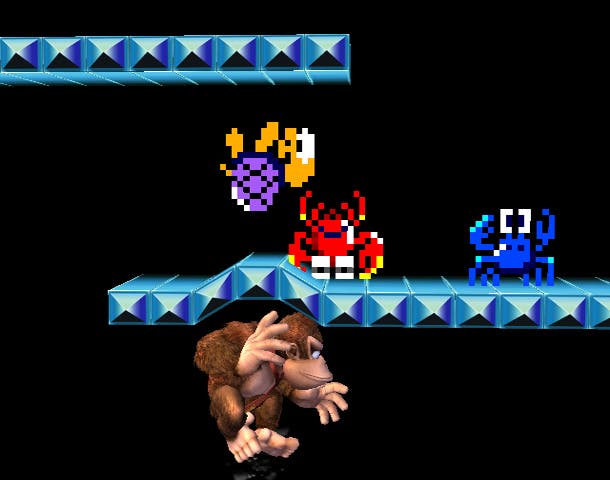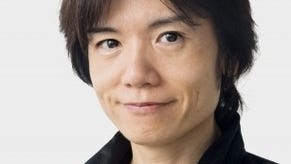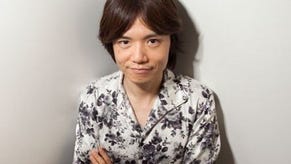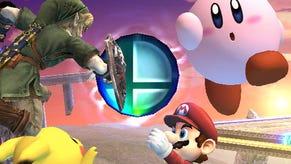Super Smash Bros. Brawl
Fantastic.
Doing so, and double-jumping, are two basic but important actions, and you can also block, grab, attack and execute specials once you've found your way around the controls. Specials are usually derived from familiar traits, so Mario's uppercut bounces an enemy for coins, Link can throw bombs and shoot arrows, Pikachu electrocutes and Yoshi can throw eggs. New characters are the same - Pit from Kid Icarus can take off and flap around, for instance, and the Pokémon Trainer can switch between a trio of Pokémon - Charizard, Ivysaur and Squirtle. Olimar is particularly eye-catching, using an army of pikmin to engage.
Also prevalent in combat are power-ups, including the SNES Superscope, which can be fired like a gun, and more functional alternatives like baseball bats and health tomatoes. Others allow you to breathe fire, swing laser-swords, or run around madly with a hammer, and then there are assist-trophies that reinforce you with other non-playable characters like Tingle. Most potentially divisive of the new ones is the Smash Ball, which is basically a finishing move, called a Final Smash, wrapped up in a floating rainbow bubble. Everybody makes for this when it appears, and for good reason. Fox McCloud turns into a Landmaster tank and starts steamrollering everyone, Bowser turns into Giga Bowser, and Pikachu evolves into a floating ball of electric energy. Olimar's Final Smash is my favourite, and hence I won't spoil.
All of this Nintendonanism takes place on stages just as frequently engineered to compliment their source material: there's a WarioWare level where your surroundings rotate through configurations derived from the original game's short, sharp bursts of quirky and diverse gameplay; a PictoChat level where the platforms beneath your feet are ever-changing illustrations (oddly not a nest of penises); a volcanic Metroid level where you have to hide in shelters that pop up on random platforms so an occasional screen-filling wave of lava doesn't murder you; an F-Zero racetrack where you get knocked around by hovercars; and many others, including a few from the Cube Smash Bros. game, Melee.

Moving platforms and stage-specific gimmicks are fewer than they were there, but initially the complexity and dynamism of all this still adds to that feeling of disorientation, especially for newcomers. But just as the strengths of the fight mechanics emerge after an hour of play, so like a good racing game you improve in your response to each stage as you learn its behaviour. This is particularly important in a game where keeping the ground beneath your feet is second only to separating the other players from the ground beneath theirs.
Balance is pretty much everything, and for the developers, too. Watching Ike perform an uppercut, release his sword, leap into the air and then grab it to slam back down into his still-dazed enemy's head surely has little place in a game where Lucas responds by directing a lightning ball around the level with the analogue stick, as Princess Peach floats by overhead and Meta Knight buzzes around, cute as a button, flapping his cape and trying to catch people in it. Except somehow it all fits. It's not the perfect blend, but it works consistently enough to produce fair battles in most cases. Indeed, if there's a flaw it's perhaps that there's a bit of uniformity among certain characters, although not many. Even Final Smashes are double-edged - Fox's Landmaster may be powerful, but it's also rather difficult to save if it tumbles off the edge, forcing caution, and other moves, like Meta Knight's, are only effective if they're used in specific ways.








